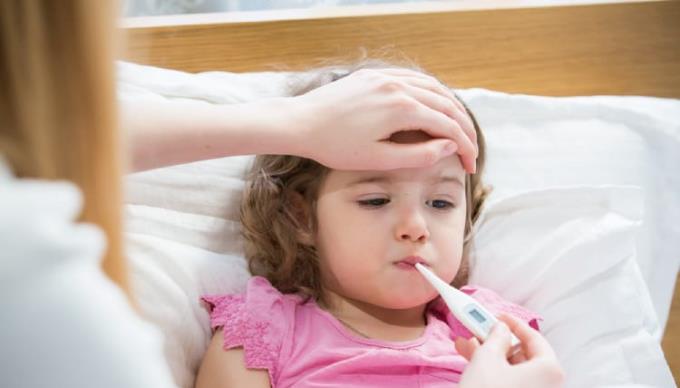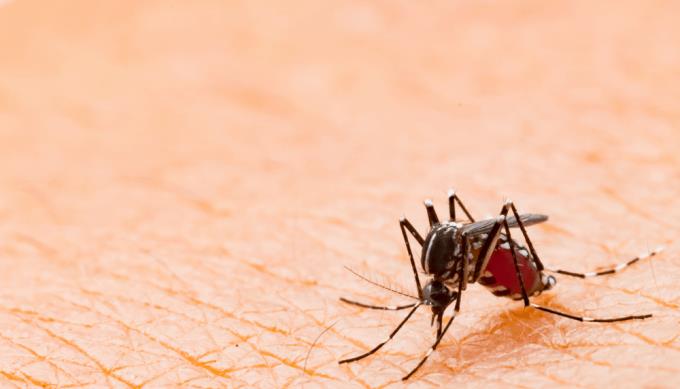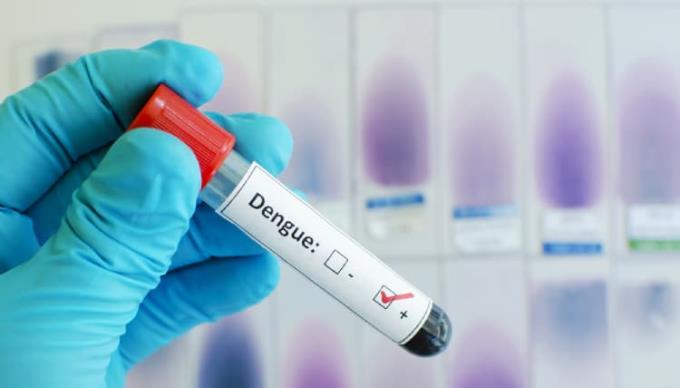Ways to determine an infants caloric needs

Learn how to determine your baby’s caloric needs, including the calories in breast milk and formula, to ensure your infant gets the right nutrition for healthy growth.
It is easier to tell the difference between viral fever and dengue if you know the specifics of each type of fever. Proactive awareness helps you to guide effective treatment and prevention.
Viral fever and dengue are common childhood illnesses. With a weak immune system, babies are susceptible to these diseases. You need to know how to distinguish between viral fever and dengue fever to take care of your baby more effectively. So what is the difference between these two diseases?

Viral fever is the diagnostic term used to refer to a fever caused by a virus. Most illnesses will go away on their own after 3–7 days with good care and treatment.
If there is a viral fever, the child often presents as:
The fever is very high in episodes, the body temperature can reach 37–38 ° C, even 40–41 ° C.
Some children experience seizures when a fever is high
Children with inflammation of the upper respiratory tract with symptoms: cough, sore throat, runny nose ...
Children with digestive disorders such as diarrhea, nausea and vomiting ...
Lymphadenopathy may be present in the head, face and neck area
Children may develop conjunctivitis such as red eyes, watery eyes
A fussy child
Viral fever in a child will go away on its own in 7 days
Nutrition: The child's body consumes more energy when suffering from a viral fever. Without adequate nutrients, the child's body will be exhausted and create more favorable conditions for the virus to attack easily. Therefore, you need to let your child rest, encourage children to drink enough water (white water, juice), eat foods rich in vitamin C (oranges, tangerines, grapefruit, guava ...), probiotics (yogurt, kimchi , sauerkraut…), protein (meat, egg…). Eat liquid food for easy digestion.
Hydration: Fever will dehydrate and electrolyte children, causing an imbalance in water and electrolytes. You let your child use oresol solution, hydrite to rehydrate. Read carefully the mixing instructions on the package and give it to your child to drink.
Reduce fever: If your child has a high fever, use a cool compress, and wipe the baby's body with warm water. Do not use ice as a compress. You give your child fever-reducing medicine as directed by your doctor (usually paracetamol ) when the child has a fever above 38 đểC to avoid convulsions due to high fever. Do not let children drink continuously or overdose, take it as directed every 4-6 hours, dose 10-15mg / kg.
Clean the child's body by daily bathing, using 0.9% sodium chloride salt water to drop the child's eyes and nose.
If your child has a high fever, constant convulsions, you do not arbitrarily treat it with folk methods at home but need to bring the child to the hospital immediately for blood tests.

Dengue fever is an infectious disease caused by dengue virus. The cause of this acute disease transmission is female mosquitoes, mostly Aedes aegypti and the remaining few in the Aedes albopictus group. This mosquito is also the culprit that transmits Chikungunya fever, yellow fever and Zika virus infection.
The Aedes aegypti mosquito is the host of the dengue virus. The virus is spread to an infected person through the bite of a female mosquito that carries the disease.
After an incubation period of 4–10 days, the mosquito that carries the virus can spread the virus to humans for the rest of its life.
♦ Onset of disease: In the first 3 days of illness, the child will have a high fever of 39-40ºC. Children feel tired, headache, body aches and sore throat, cough, runny nose ... The child's symptoms of dengue fever are very similar to viral fever.
♦ Hemorrhagic phase: The child may reduce fever, but the body begins to show signs of hemorrhage (due to a decrease in platelets in the blood).
Hemorrhage under the skin: The child's body will have petechiae under the skin, and the skin will begin to itch.
Children can have nosebleeds, bleeding teeth ...
Children with gastrointestinal bleeding such as black stools, bloody stools or vomiting blood.
More severe is brain hemorrhage, intra-abdominal hemorrhage ... dangerous to life.
♦ The recovery phase: The child will stop fever, reduce itching and platelets begin to increase.
Let your child rest in bed.
Drink plenty of water, oresol can be used to rehydrate.
Check body temperature and monitor your baby continuously.
Give your baby porridge, milk or soup.
Avoid scratching as it will scratch your skin, instead use your hands to gently rub. The doctor will prescribe medicine to control the itching. But the situation is only slightly reduced, maybe the child will become more irritable, more uncomfortable, the night cannot sleep because the person is itchy.
Reduce fever for children when the fever is 38C. For children to use paracetamol, take 4-6 hours / time, dose 10-15mg / kg. Use an eye towel to wipe your child's forehead and armpits. Do not use ice as a compress. Absolutely do not use aspirin or ibuprofen because these two drugs can cause gastritis, reduce platelet aggregation, make bleeding worse and Reye's syndrome in children.
Should go to regular check-ups as advised by the doctor. If your child shows signs of high fever, convulsions, lethargy, vomiting blood, black stools… please take the child to the emergency immediately to prevent complications of dengue .

How to distinguish viral fever from dengue fever will be based on:
Testing: Have your child see a doctor as soon as you see your baby's fever and get tested for a viral or dengue fever. Dengue tests include: Test Dengue (+), blood formula (the number of platelets decreased, the volume of Hct blood cells increased). If your baby has a fever, the numbers above will be normal.
Hemorrhagic stage: Children with dengue fever will hemorrhage in many forms (skin, teeth, stomach ...), while viral fever has no manifestation of hemorrhage. The way to tell the difference between viral fever and dengue fever is: with a viral fever, stretch the hemorrhagic skin with your hand, the rash will disappear. With dengue, the nodule will not go away.
It can be said that viral fever is a common form of many fevers caused by viruses such as rubella virus, measles virus, hand, foot and mouth virus or dengue virus. To distinguish viral fever and dengue fever effectively, do not forget to write in the health handbook the useful information above.
Learn how to determine your baby’s caloric needs, including the calories in breast milk and formula, to ensure your infant gets the right nutrition for healthy growth.
Discover the top 5 smartest dog breeds in the world, including Border Collie, Poodle, German Shepherd, Golden Retriever, and Doberman Pinscher. Learn about their unique traits and why they are considered the most intelligent dogs.
Discover 7 nutritious and delicious ways to cook egg porridge for babies, including recipes with cheese, pumpkin, tomato, and more. Learn how to prepare baby-friendly egg porridge with our expert tips.
After a series of medical measures they obtained a complete human vascular system profile.
Watermelon is one of the fruits that many people love, not only cheap but also delicious, nutritious and refreshing in the summer. To get delicious watermelon pieces, show off your housewives, your artistic talents to cut beautiful pieces of watermelon.
aFamilyToday Health - The digestive system and body in each baby is different. Parents need to recognize notes to deal with when babies have a food allergy!
Babies need many factors for perfect development. aFamilyToday Health shares with parents things to keep in mind when babies are 8 weeks old so that parents can take care of their babies the best!
Babies need many factors for perfect development. aFamilyToday Health shares with parents things to keep in mind when babies are 18 weeks so that parents can take care of their babies the best!
Babies need many factors for perfect development. aFamilyToday Health shares with parents things to keep in mind when babies are 28 weeks old so that parents can take care of their babies the best!
Babies need many factors for perfect development. aFamilyToday Health shares with parents things to keep in mind when babies are 32 weeks old so that parents can take care of their babies the best!








